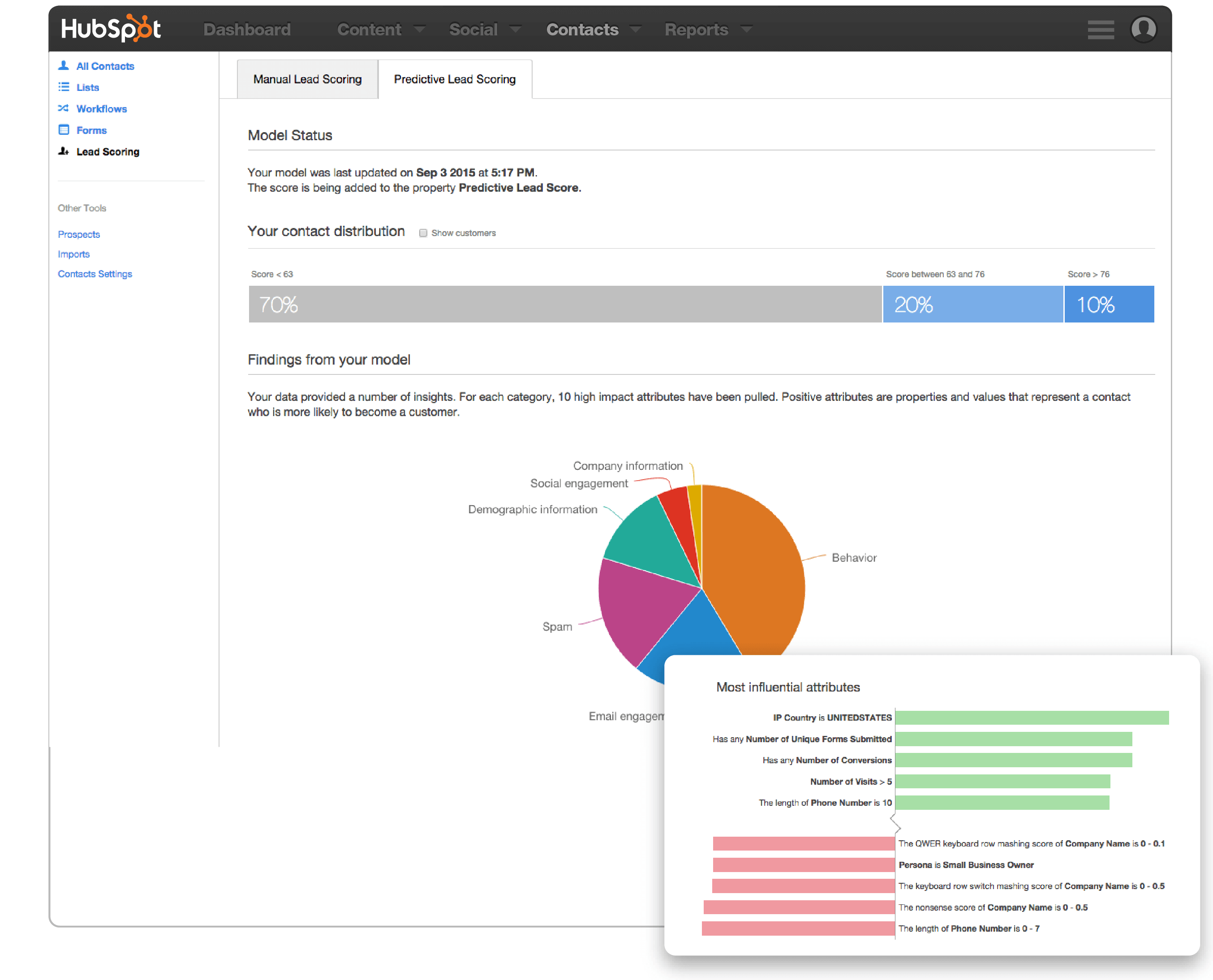
HubSpot Marketing Hub with Predictive Lead Scoring: Complete Buyer's Guide
Mid-market AI solution for lead prioritization
HubSpot Marketing Hub with Predictive Lead Scoring represents the accessible entry point for mid-market organizations seeking AI-powered lead prioritization without enterprise complexity or dedicated data science resources.
Market Position & Maturity
Market Standing
HubSpot Marketing Hub with Predictive Lead Scoring occupies a strategic mid-market position within the AI marketing automation landscape, competing on implementation efficiency and cost optimization rather than enterprise feature sophistication [48][50].
Company Maturity
Company maturity demonstrates established operational scale through the broader HubSpot platform's market presence, though specific predictive lead scoring adoption metrics require verification through current company sources [54][55].
Strategic Partnerships
Strategic partnerships within the HubSpot ecosystem provide integration advantages, though external partnership depth for advanced AI capabilities appears limited compared to specialized competitors like 6sense or Mintigo [48][50].
Longevity Assessment
The platform benefits from HubSpot's established customer support infrastructure and development resources, providing stability assurance for mid-market buyers concerned about vendor longevity and continued product development [54][56].
Proof of Capabilities
Customer Evidence
Customer validation demonstrates measurable business outcomes across diverse mid-market implementations. G2's VP of Demand Generation Adam Goyette achieved a 25% cost-per-lead reduction while maintaining lead quality standards [58].
Quantified Outcomes
Operational efficiency evidence includes mid-market retail operations reporting 15-hour weekly reductions in sales qualification time following migration from manual scoring processes [54].
AI Technology
HubSpot Marketing Hub with Predictive Lead Scoring operates through a machine learning-driven architecture that analyzes over 1,000 data points to generate conversion probability scores ranging from 0-100 [48][49][51].
Architecture
Technical architecture emphasizes native CRM integration within the HubSpot ecosystem, eliminating common data synchronization challenges that plague multi-platform implementations [54][55].
Primary Competitors
Primary competitors include Salesforce Einstein and Adobe Experience Cloud for enterprise journey orchestration, and specialized solutions like 6sense, Mintigo, and Pecan AI for dedicated predictive analytics capabilities [43][48][50][59].
Competitive Advantages
Competitive advantages center on 4-12 week implementation timelines compared to longer enterprise competitor deployments, while maintaining native CRM workflow integration that eliminates common data synchronization challenges [54][55][43][59].
Market Positioning
Market positioning establishes HubSpot as the accessible AI solution for mid-market organizations, competing on implementation efficiency and cost optimization rather than enterprise feature sophistication [48][50].
Win/Loss Scenarios
Win/loss scenarios favor HubSpot when organizations prioritize rapid deployment within existing HubSpot ecosystems and seek proven mid-market fit with transparent pricing structures [54][55].
Key Features

Pros & Cons
Use Cases
Integrations
Featured In Articles
Comprehensive analysis of AI Predictive Analytics for AI Marketing & Advertising for AI Marketing & Advertising professionals. Expert evaluation of features, pricing, and implementation.
How We Researched This Guide
About This Guide: This comprehensive analysis is based on extensive competitive intelligence and real-world implementation data from leading AI vendors. StayModern updates this guide quarterly to reflect market developments and vendor performance changes.
59+ verified sources per analysis including official documentation, customer reviews, analyst reports, and industry publications.
- • Vendor documentation & whitepapers
- • Customer testimonials & case studies
- • Third-party analyst assessments
- • Industry benchmarking reports
Standardized assessment framework across 8 key dimensions for objective comparison.
- • Technology capabilities & architecture
- • Market position & customer evidence
- • Implementation experience & support
- • Pricing value & competitive position
Research is refreshed every 90 days to capture market changes and new vendor capabilities.
- • New product releases & features
- • Market positioning changes
- • Customer feedback integration
- • Competitive landscape shifts
Every claim is source-linked with direct citations to original materials for verification.
- • Clickable citation links
- • Original source attribution
- • Date stamps for currency
- • Quality score validation
Analysis follows systematic research protocols with consistent evaluation frameworks.
- • Standardized assessment criteria
- • Multi-source verification process
- • Consistent evaluation methodology
- • Quality assurance protocols
Buyer-focused analysis with transparent methodology and factual accuracy commitment.
- • Objective comparative analysis
- • Transparent research methodology
- • Factual accuracy commitment
- • Continuous quality improvement
Quality Commitment: If you find any inaccuracies in our analysis on this page, please contact us at research@staymodern.ai. We're committed to maintaining the highest standards of research integrity and will investigate and correct any issues promptly.